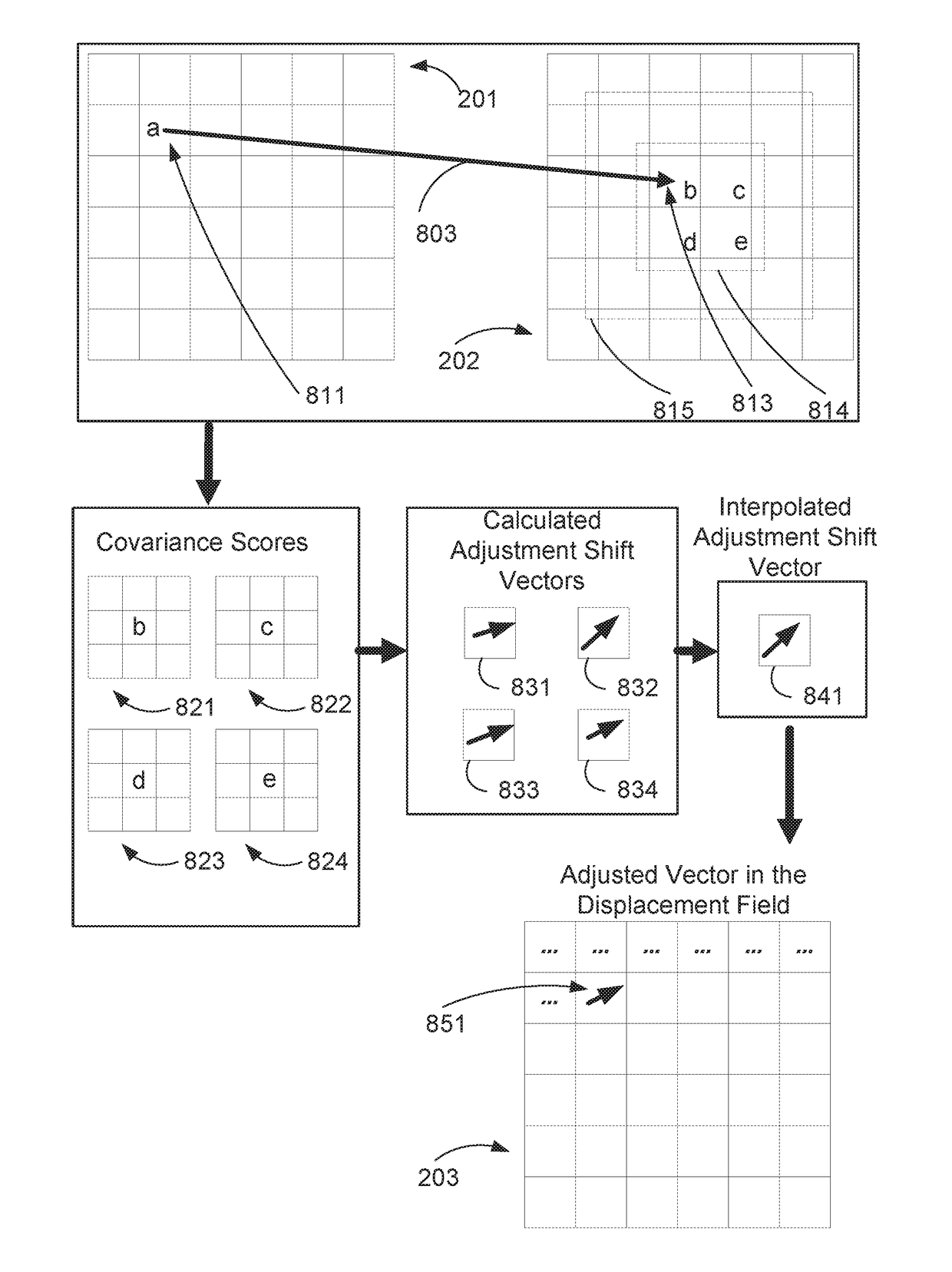Image registration method
a registration method and image technology, applied in the field of image processing, can solve the problems of simple rigid registration methods, inability to handle local distortions in images, and inability to register related images
- Summary
- Abstract
- Description
- Claims
- Application Information
AI Technical Summary
Benefits of technology
Problems solved by technology
Method used
Image
Examples
example application 1
[0193]The CSM image registration method 300 works effectively with both single-modal alignment, in which the pixels in both input images 201 and 202 represent the same kind of measurement, and also multi-modal alignment, in which pixel values represent different “meanings”. The method 300 also works in a single-moded, multi-channel environment in which pixel values vary over time. Such variation can be caused by, for example, changes in lighting, changes in outdoors photographs due to the position of the sun over time, pairs of photographs taken with flash and without flash, and images of the same scene with changes in camera or light source positioning.
[0194]One application in which the CSM image registration method 300 can be used successfully is in the registration of multiple images having objects whose appearance is a complicated function of light source direction. One example of such a complicated function is when light reflects of brushed metal where the lighting response is ...
example application 2
[0204]The CSM image registration method 300 for estimating a displacement field works best if the displacements being measured are smaller than a couple of pixels. To estimate larger displacements, two approaches are described hereinbefore: estimation of a small number of parameters of a global non-rigid transformation using the MI measure, and a pyramidal approach. The pyramidal approach registers down-sampled, lower-resolution versions of the input images to provide starting conditions for progressively estimating displacements of higher resolution images.
[0205]One application for MI-based nonrigid registration is the registration of digital pathology slides, in which two or more human tissue samples are sliced from a pathology specimen, stained by different methods, and mounted upon a glass slide. Such samples can be scanned by a pathology microscope 180 (described in relation to FIG. 1A) at high resolution, and can generate images of a large size (e.g., an image of 50,000×50,000...
PUM
 Login to View More
Login to View More Abstract
Description
Claims
Application Information
 Login to View More
Login to View More - R&D
- Intellectual Property
- Life Sciences
- Materials
- Tech Scout
- Unparalleled Data Quality
- Higher Quality Content
- 60% Fewer Hallucinations
Browse by: Latest US Patents, China's latest patents, Technical Efficacy Thesaurus, Application Domain, Technology Topic, Popular Technical Reports.
© 2025 PatSnap. All rights reserved.Legal|Privacy policy|Modern Slavery Act Transparency Statement|Sitemap|About US| Contact US: help@patsnap.com



